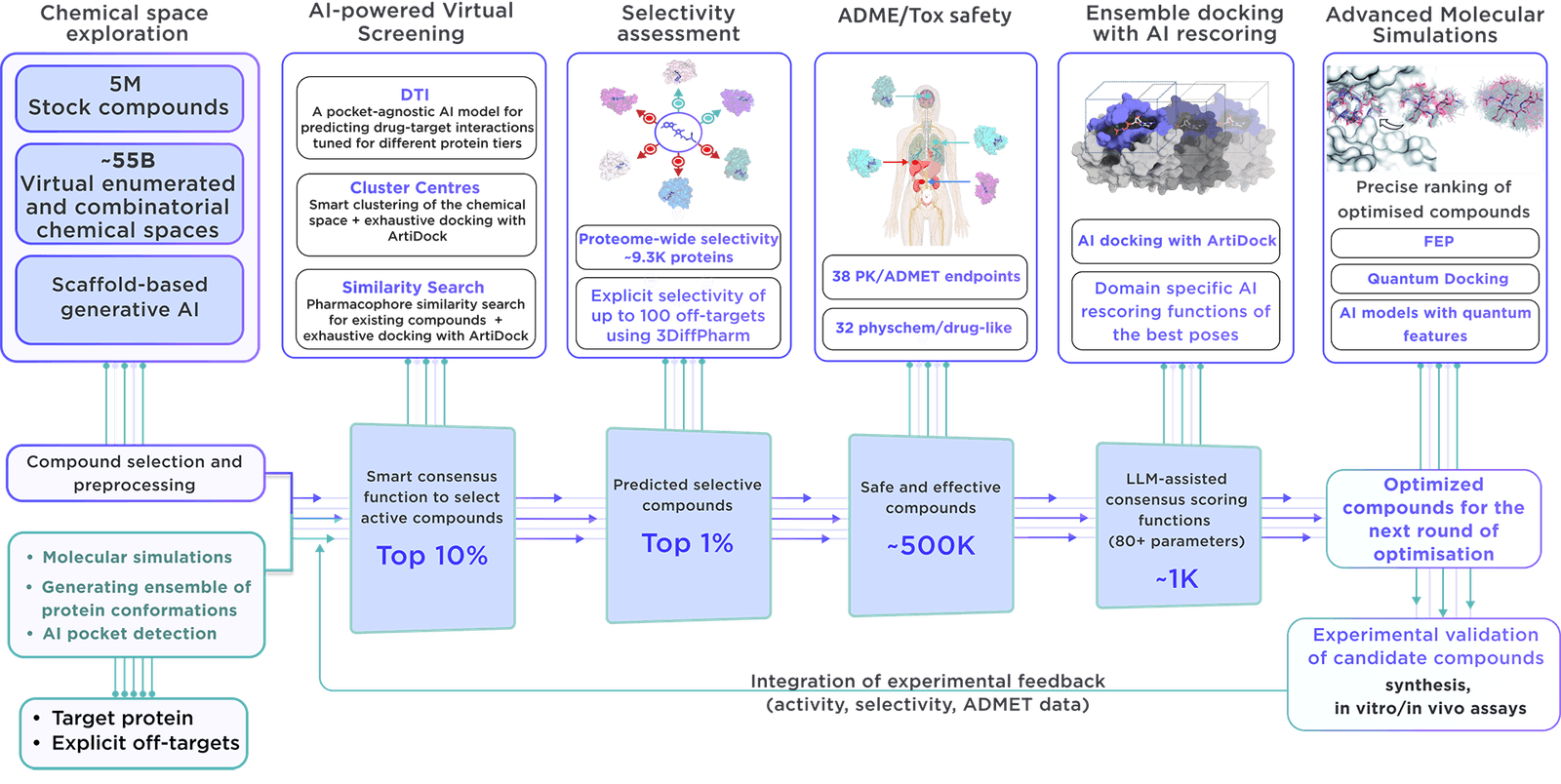Focused On-demand Libraries - Receptor.AI Collaboration
Explore the Potential with AI-Driven Innovation
The specialised, focused library is developed on demand with the most recent virtual screening and parameter assessment technology, guided by the Receptor.AI drug discovery platform. This approach exceeds the capabilities of traditional methods and offers compounds with higher activity, selectivity, and safety.
Our selection of compounds is from a large virtual library of over 60 billion molecules. The production and distribution of these compounds are managed by Reaxense.
The library includes a list of the most promising modulators annotated with 38 ADME-Tox and 32 physicochemical and drug-likeness parameters. Also, each compound is presented with its optimal docking poses, affinity scores, and activity scores, providing a comprehensive overview.
Our top-notch dedicated system is used to design specialised libraries for protein-protein interfaces.
The method includes extensive molecular simulations of the target protein alone and in complex with its most relevant partner proteins, followed by ensemble virtual screening that considers conformational mobility in both free and complex states. Potential binding pockets are examined on the protein-protein interaction interface and in distant allosteric sites to cover all possible mechanisms of action.
Our library stands out due to several important features:
- The Receptor.AI platform compiles comprehensive data on the target protein, encompassing previous experiments, literature, known ligands, structural details, and more, leading to a higher chance of selecting the most relevant compounds.
- Advanced molecular simulations on the platform help pinpoint potential binding sites, making the compounds in our focused library ideal for finding allosteric inhibitors and targeting cryptic pockets.
- Receptor.AI boasts over 50 tailor-made AI models, rigorously tested and proven in various drug discovery projects and research initiatives. They are crafted for efficacy, dependability, and precision, all of which are key in creating our focused libraries.
- Beyond creating focused libraries, Receptor.AI offers comprehensive services and complete solutions throughout the preclinical drug discovery phase. Our success-based pricing model minimises risk and maximises the mutual benefits of the project's success.
Receptor.AI
Q8NFZ5
UPID:
TNIP2_HUMAN
ALTERNATIVE NAMES:
A20-binding inhibitor of NF-kappa-B activation 2; Fetal liver LKB1-interacting protein
ALTERNATIVE UPACC:
Q8NFZ5; B1AKS4; B3KTY8; D3DVQ9; Q7L5L2; Q9BQR6; Q9H682

